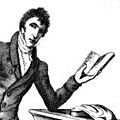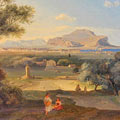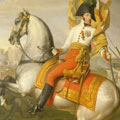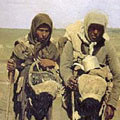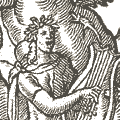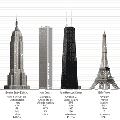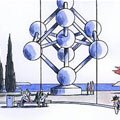The angel of the revolution : a tale of the coming terror (1893)
van George Chetwynd Griffith
van George Chetwynd Griffith
Twintig jaar voor het uitbreken van de Eerste Wereldoorlog verscheen The angel of the revolution : a tale of the coming terror van George Chetwynd Griffith. Net als Jules Verne schreef hij science fiction verhalen die met met staalgravures geïllustreerd waren. Bladerend langs deze prenten trekt een stoet wetenschappelijke fantasieën voorbij. Meestal lachwekkend, maar soms beangstigend realistisch in de vooruitziende blik.
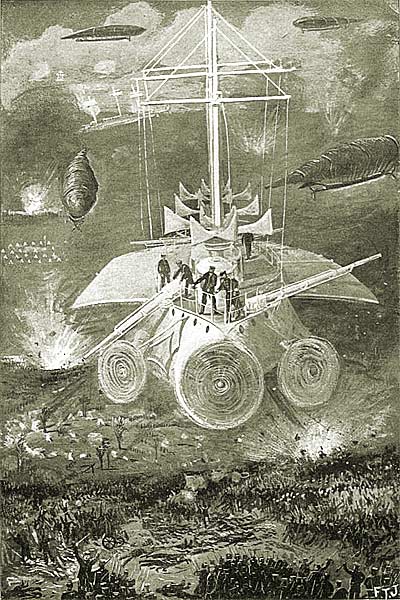
bovenstaande prent heeft als onderschrift: “Do you understand now why you could not make terms for Russia?” (credits: archive.org)
De hel van de loopgravenoorlog lag in 1893 nog achter de horizon, maar soms leek de lezer er aan het einde van de negentiende eeuw er al een glimp van mee te krijgen. Het verhaal heeft als ondertitel a tale of the coming terror, een profetische “evergreen”.
The Angel of the Revolution: A Tale of the Coming Terror (1893) is a science fiction novel by English writer George Griffith. It was his first published novel and remains his most famous work. It was first published in Pearson’s Magazine and was prompted by the success of The Great War of 1892 in Black and White magazine, which was itself inspired by The Battle of Dorking.
A lurid mix of Jules Verne’s futuristic air warfare fantasies, the utopian visions of News from Nowhere and the future war invasion literature of Chesney and his imitators, it told the tale of a group of terrorists who conquer the world through airship warfare. Led by a crippled, brilliant Russian Jew and his daughter, the ‘angel’ Natasha, ‘The Brotherhood of Freedom’ establish a ‘pax aeronautica’ over the earth after a young inventor masters the technology of flight in 1903. The hero falls in love with Natasha and joins in her war against society in general and the Russian Czar in particular.
Bron: en.wikipedia.org
A lurid mix of Jules Verne’s futuristic air warfare fantasies, the utopian visions of News from Nowhere and the future war invasion literature of Chesney and his imitators, it told the tale of a group of terrorists who conquer the world through airship warfare. Led by a crippled, brilliant Russian Jew and his daughter, the ‘angel’ Natasha, ‘The Brotherhood of Freedom’ establish a ‘pax aeronautica’ over the earth after a young inventor masters the technology of flight in 1903. The hero falls in love with Natasha and joins in her war against society in general and the Russian Czar in particular.
Bron: en.wikipedia.org

